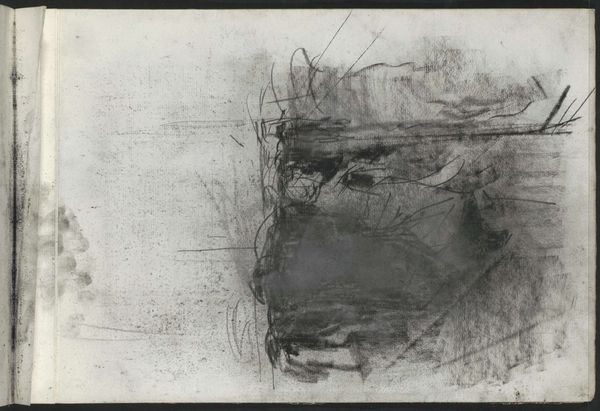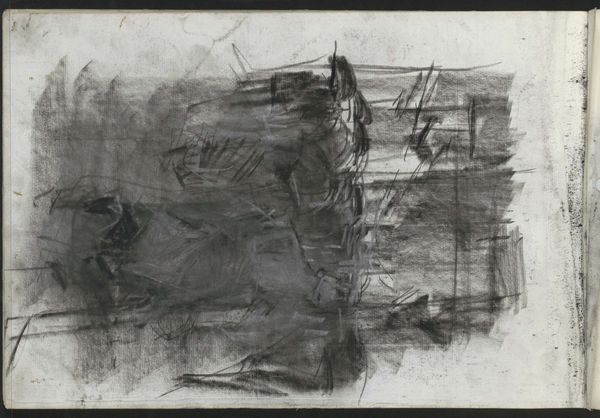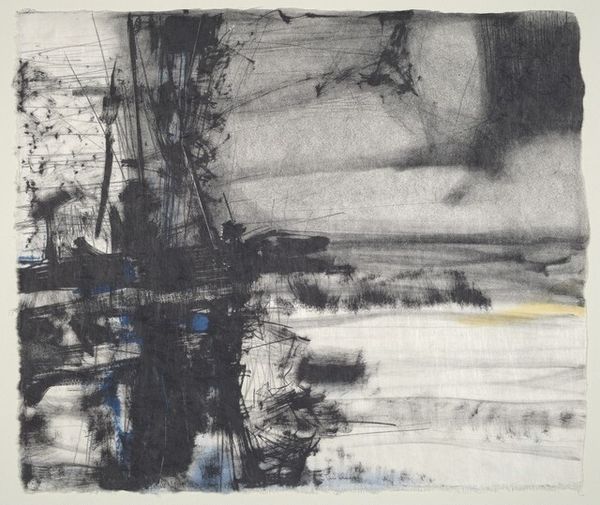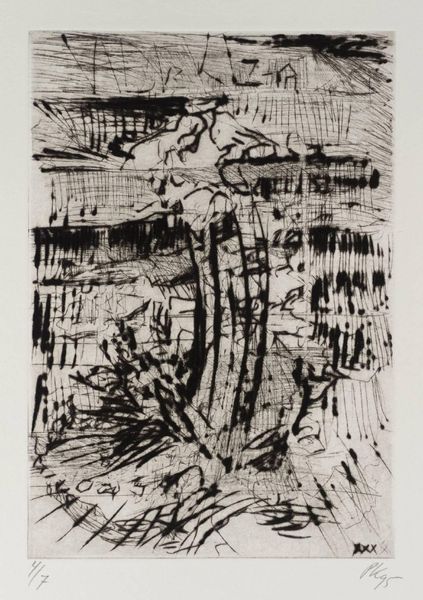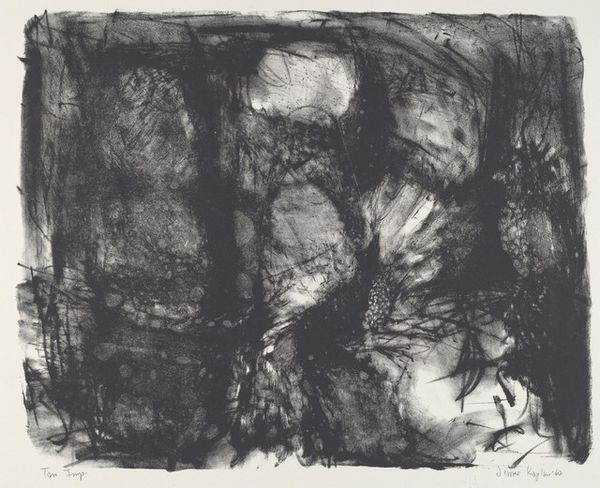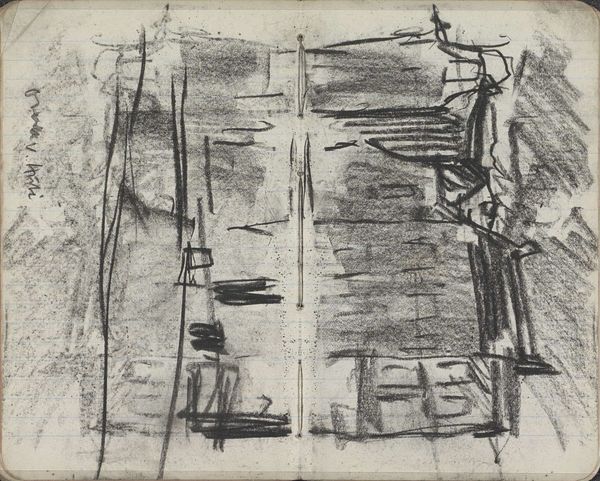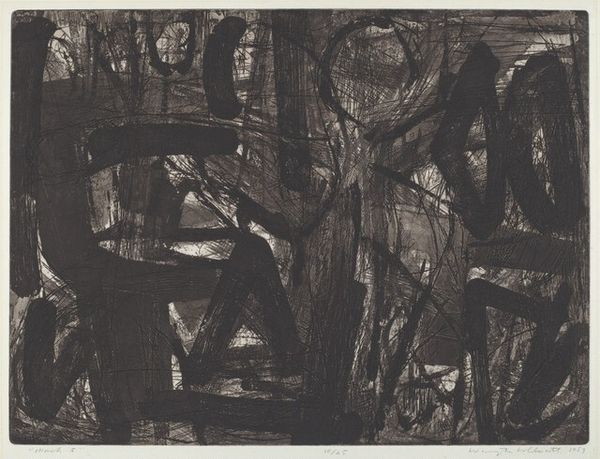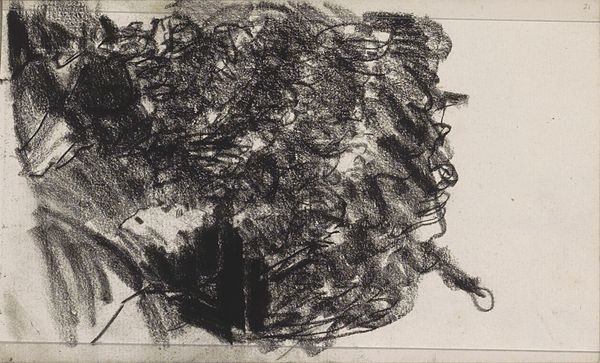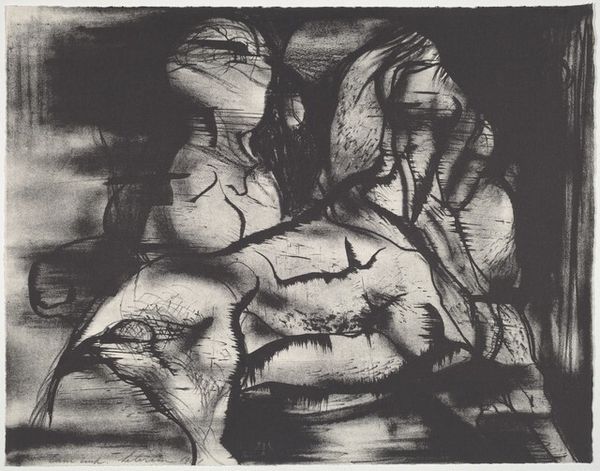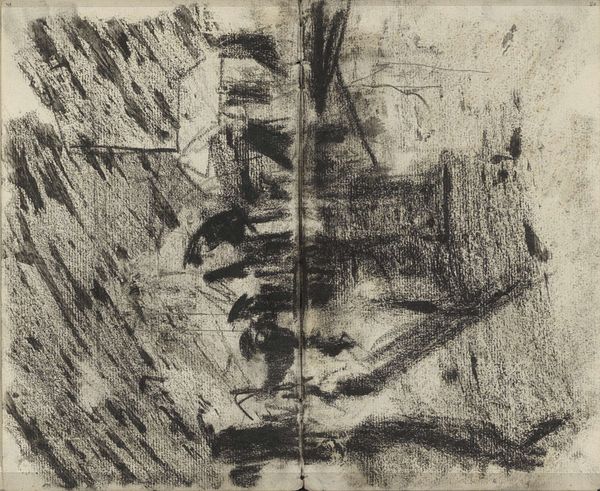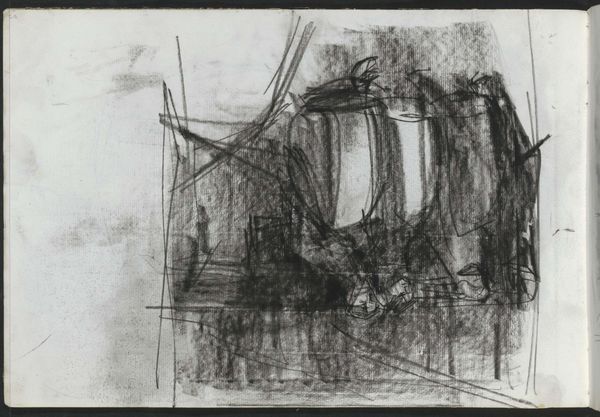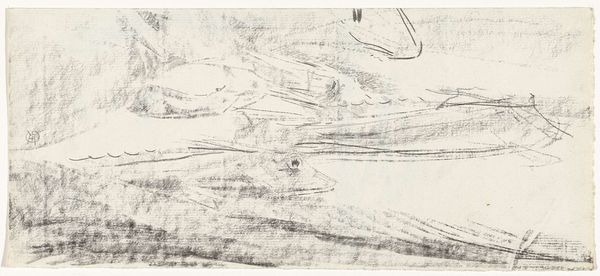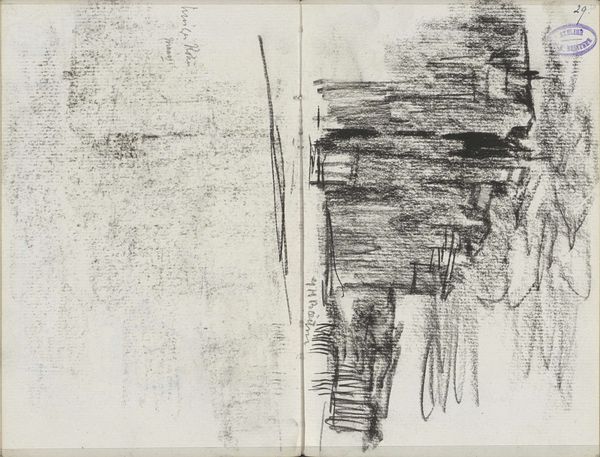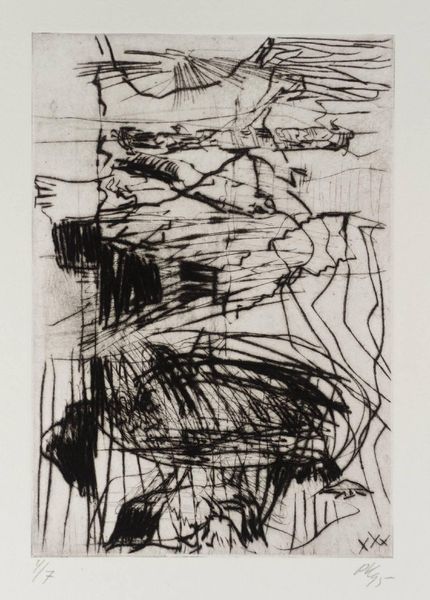
Copyright: Rijks Museum: Open Domain
Editor: Here we have Isaac Israels's "Figuren op straat, bij avond," which roughly translates to "Figures on the street, at evening", created sometime between 1886 and 1934 using charcoal. The drawing is very gestural. What I notice immediately is its overwhelming darkness, an urban nocturne created with these violent slashes of charcoal. How do you interpret this work? Curator: Israels's choice of charcoal and his expressive strokes place us right there in the grittiness of the late 19th-century urban landscape. The obscured figures could suggest an exploration of alienation, of individuals lost within the burgeoning metropolis. Consider the rapidly changing social structures of the time – industrialization, mass migration to cities – and how that uprooted traditional communities, particularly impacting women and marginalized groups. Does the ambiguous rendering of these figures resonate with a sense of vulnerability, or perhaps defiance? Editor: I can see that. I initially thought the figures were blurred, almost ghostly, which I associated with the darkness of the drawing itself. It makes sense to see that ambiguity as representative of larger anxieties related to rapid urbanization. I am struck that these ‘street figures’ could represent very different people in society. Curator: Precisely. And who has the privilege of occupying public spaces safely? Whose stories are deemed worthy of representation? The murkiness of the medium becomes a commentary on the social stratification inherent within these "street scenes," forcing us to ask: who are these figures, and what narratives are being subtly erased by the quickness of this drawing technique and the heavy blacks and greys dominating the picture plane? It leaves a lot to the imagination while highlighting historical struggles still visible in present day power structures. Editor: That gives me a lot to think about in terms of who gets to be visible and how the act of obscuring can also be a political statement. Thanks! Curator: My pleasure. Art offers the best opportunities for collective reflection on challenging social issues.
Comments
No comments
Be the first to comment and join the conversation on the ultimate creative platform.
